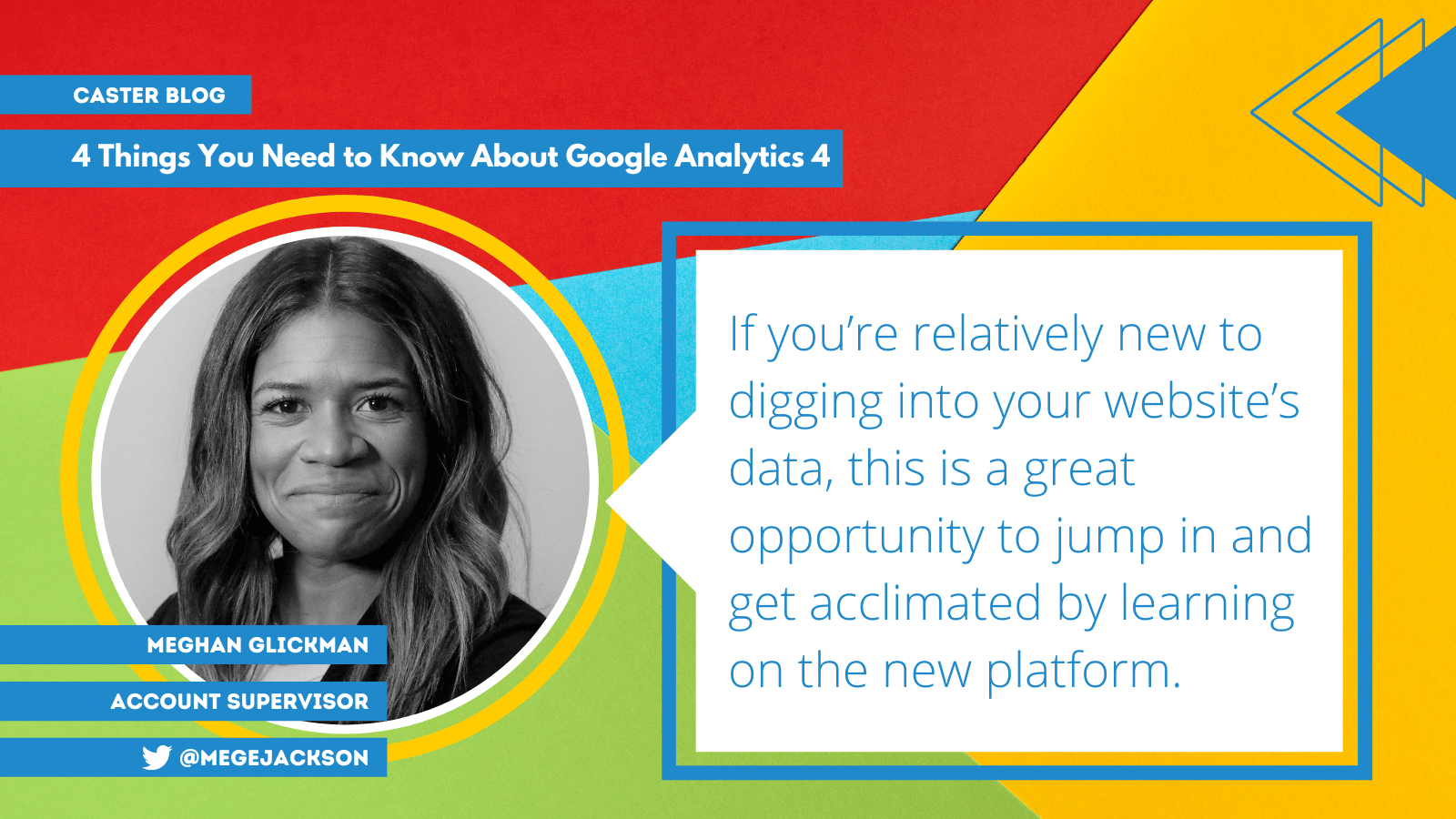
4 Things You Need to Know About Google Analytics 4
In April, I started blogging about SEO tips – feel free to check out that blog post if you’re in need of some tips to improve your website’s SEO. Today I want to spill the tea on Google Analytics 4 and give you a quick list of things you should be aware of if you’re in charge of your business’ website.
In October 2020, Google announced they would be retiring Universal Analytics (UA), also known as Google Analytics 3 after the Austrian data protection authority, DSB, ruled that the use of Google Analytics 3 violates GDPR. Google’s new analytics platform, Google Analytics 4, is now available for download and implementation.
Here are 4 things you need to know about Google Analytics 4:
- Universal Analytics vs. Google Analytics 4
- Improved customer journey tracking
- Enhanced user-interface, measurements, and reporting
- The time to download Google Analytics 4 is NOW
1. Universal Analytics vs. Google Analytics 4
If you aren’t a Google Analytics guru yet, the high-level difference between Universal Analytics and Google Analytics 4 is how the data is being measured.
Hit Types
Universal Analytics hit types include page hits, event hits, ecommerce hits, and social interaction hits. Google Analytics 4 data is event-based (as opposed to being measured by page views), with the principle that any interaction can be captured as an event.
So, Universal Analytics hit types = events in Google Analytics 4
Events
Whereas Universal Analytics events each have their own hit type, every “hit” is an event in Google Analytics 4. This means that when someone views one of your website pages, it triggers a page_view automatically. I love when a platform can automate the data and do the work for us! Google Analytics 4 has automatically collected events, enhanced measurement events, and the ability to implement additional events such as recommended events and custom events.
2. Improved customer journey tracking
I personally love digging into data, but I found it difficult to get an accurate depiction of a customer buying journey with Universal Analytics – which is the #1 question I get from clients seeking digital marketing help. From a user’s initial touchpoint through their activity post-conversion (whether that be through purchase, download, filling out a form, etc.) – the Google Analytics 4 Life Cycle reports mirror the four phases of the customer journey – acquisition, engagement, monetization, and retention – and make it much easier to see the entire picture (without doing a ton of work).

3. Enhanced user-interface, measurements, and reporting
There is a big difference between the Google Analytics 4 interface and the Universal Analytics interface. This may take some adjustment for some folks who are well-versed in Universal Analytics, but if you’re relatively new to digging into your website’s data, this is a great opportunity to jump in and get acclimated by learning on the new platform.
As I mentioned earlier, I found the reporting capabilities with Universal Analytics difficult to use; Google Analytics 4’s Analysis Hub is going to make my job much easier. The new reporting capabilities make it easier for you to view funnel analysis, path analysis, heat maps, segment overlap, and more – plus, you can export the data and a variety of formats.

4. The time to download Google Analytics 4 is NOW.
Google strongly recommends that you make the switch to Google Analytics 4 now so you can start building the historical data for the new platform. On July 1, 2023, Universal Analytics properties will stop collecting data, and any historic data will be deleted six months later. To make it easy on you, here are the instructions on how to install GA4:
Option 1: Set up Analytics data collection for the first time
Do this if you’re new to Analytics and ready to collect data for your website and/or app.
Option 2: Add Google Analytics 4 to a site with Universal Analytics (Analytics “classic”)
The GA4 Setup Assistant will add a Google Analytics 4 property alongside your existing Universal Analytics property. Your Universal Analytics property will continue to collect data. You can access both using the property selector in the Admin area.
Option 3: Add Google Analytics 4 to a website builder platform or CMS (content management system)
Do this if you use a CMS-hosted (Content Management System) website, e.g. a website created using Wix, WordPress, Drupal, Squarespace, GoDaddy, WooCommerce, Shopify, Magento, Awesome Motive, HubSpot, etc.
Next Steps
I understand that most folks will be in different stages of the process towards upgrading to Google Analytics 4. If you’re just learning about it, take advantage of the ability to move to Google Analytics 4 now. You have just about a year to get comfortable with the new platform and all the incredible insights it has to offer. Here are some more resources I found that may be helpful to you:
- Search Engine Land | Google rolling out conversion migration tool for Google Analytics 4
You can use this tool to import your Universal Analytics 3 goals into GA4 - Search Engine Land | Google Analytics 4 Guide for PPC
Want to use Google Analytics 4 for paid search? - Google | Meet Your Marketing Objectives with the New Google Analytics
- Google | Help Center: Make the Switch to Google Analytics 4
I’m always looking for data-led methods of working smarter, not harder. Connect with me @megejackson on Twitter to share hacks, tips, and tricks for digital communication optimization.
